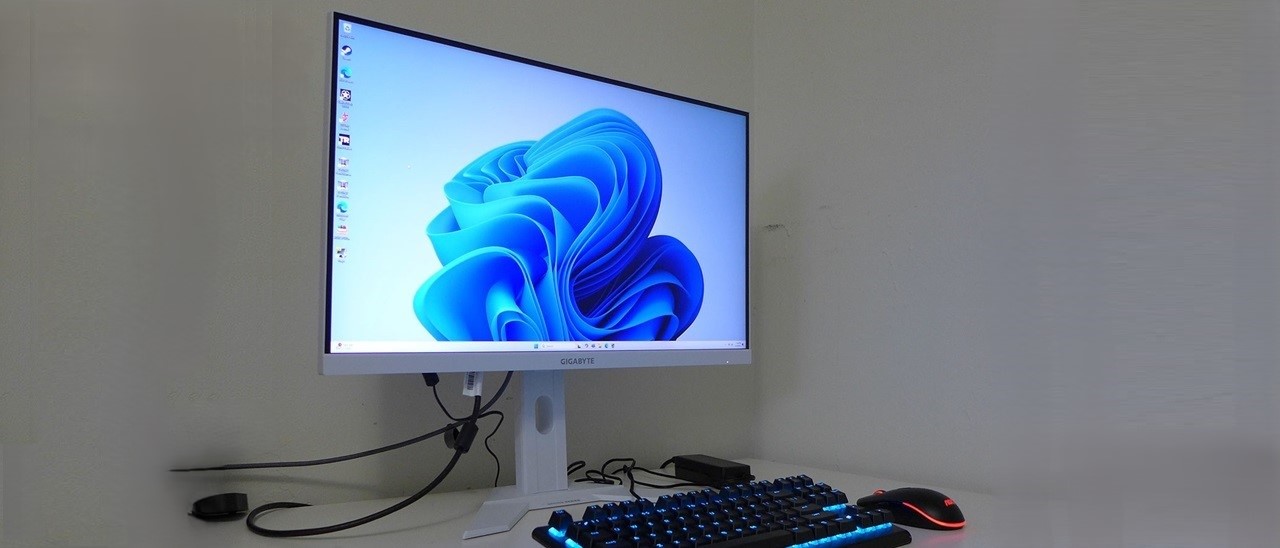Why you can trust Tom's Hardware
Our HDR benchmarking uses Portrait Displays’ Calman software. To learn about our HDR testing, see our breakdown of how we test PC monitors.
The M27QA ICE supports HDR10 signals by switching automatically to HDR mode. All image controls are grayed out, but I found decent color accuracy and a bright picture.
HDR Brightness and Contrast
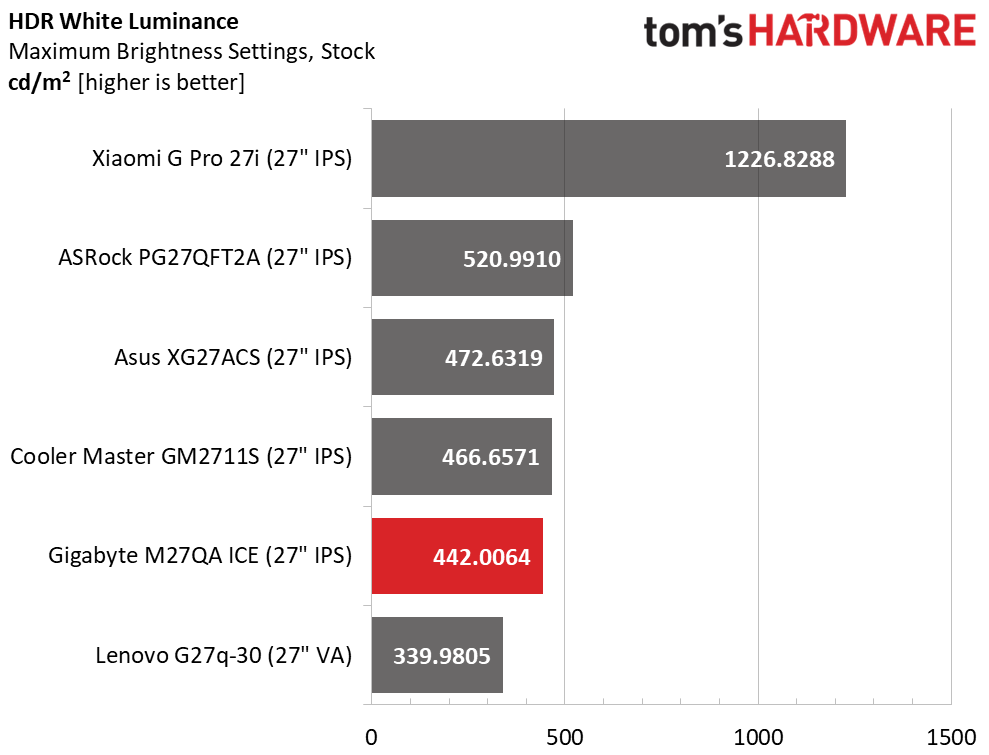
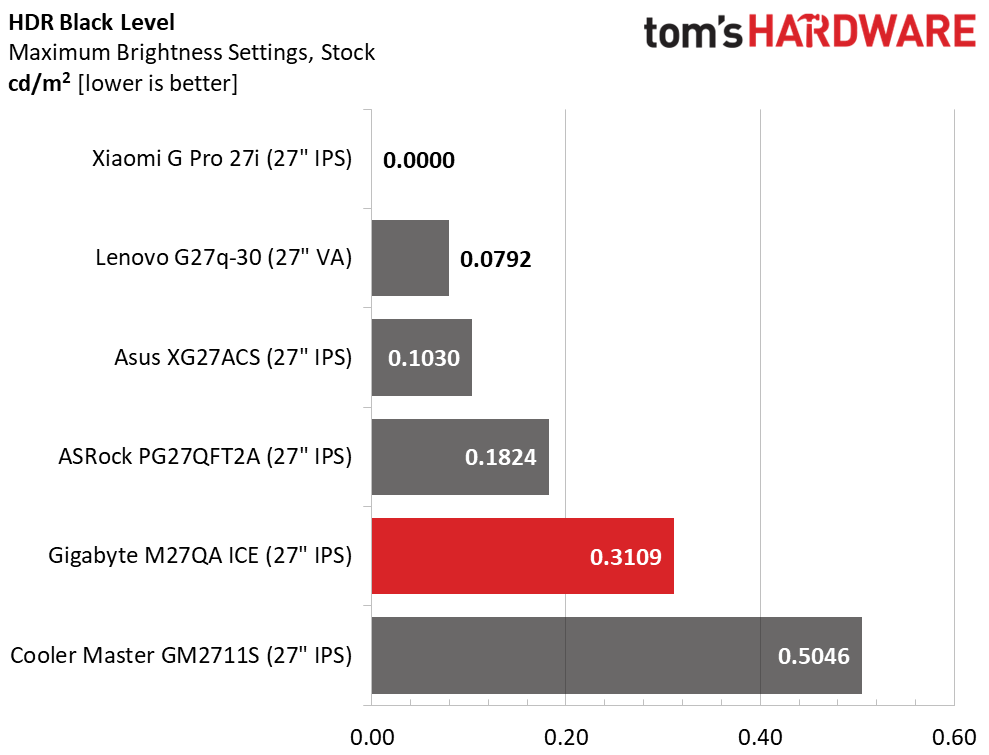
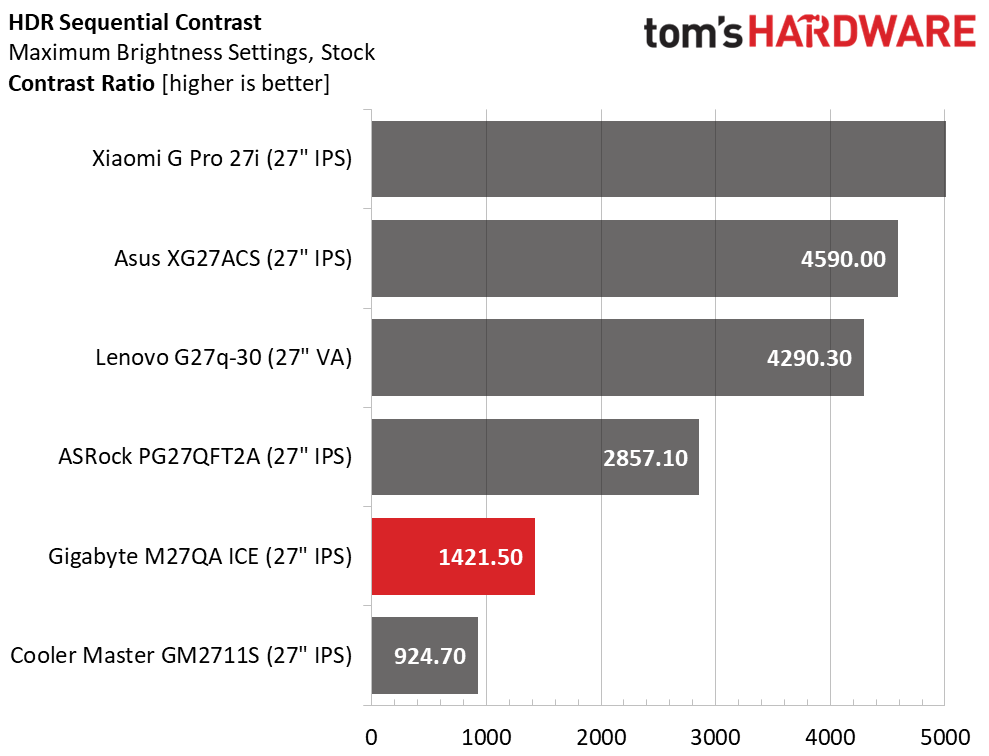
The M27QA ICE is like other HDR monitors in this price bracket in that it supports HDR10 but does not offer a significant boost to image quality. Peak brightness is higher than in SDR mode with a measured 442 nits. This provides impactful highlights and saturated color. But black levels are elevated too, so there is no more contrast. Some sort of dynamic dimming would be a welcome addition to provide a broader range here. You can see that the other screens make a better attempt to punch up their HDR image quality. And the Xiaomi uses Mini LED tech to shut off all zones for black signals making its contrast unmeasurable. The M27QA ICE is adequate, but it does not excel.
Grayscale, EOTF and Color
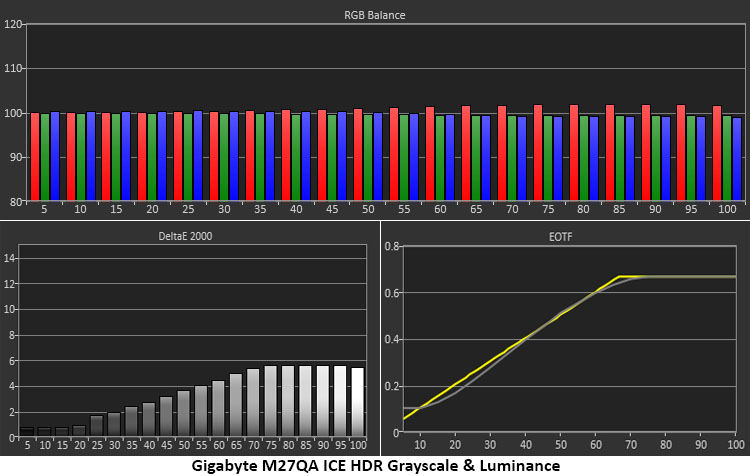
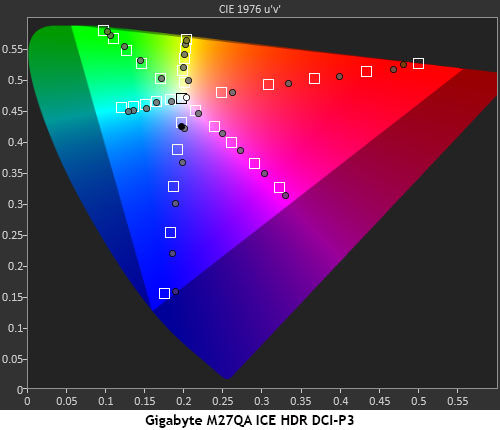
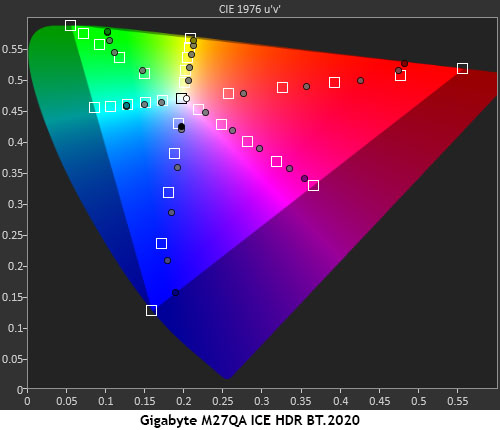
In the HDR grayscale test, you can see a slight red push which is a forgivable error. It maintains the picture’s depth and just lends a little extra warmth. There are no means to calibrate HDR, but this performance is typical of budget displays. The EOTF curve tracks right on the reference except for the zero and 5% steps, which are too light. This makes the deepest shadows a little gray but overall, the image is rich with detail and crisply rendered.
In the color test, there is general over-saturation but nothing to cause concern. The M27QA ICE looks similar to other value HDR monitors in that it is very colorful and bright, but only a little more so than its SDR image. Hue tracking is very good, meaning you won’t see any color out of place. It also tracks most of the BT.2020 gamut correctly until it runs out of color at 80% red, 75% green and 95% blue. The large blue primary comes in handy there, giving the M27QA ICE more blue punch than some other HDR screens.
Test Takeaway: The M27QA ICE is in the category of monitors that support HDR but don’t embrace it. It tracks color and luminance accurately so it will show you a good image with correct tone mapping. But since it lacks dynamic contrast, it won’t have much more punch than an SDR picture. There’s a little more color saturation and overall brightness but nothing more.
MORE: Best Gaming Monitors
Get Tom's Hardware's best news and in-depth reviews, straight to your inbox.
MORE: How We Test PC Monitors
MORE: How to Buy a PC Monitor

Christian Eberle is a Contributing Editor for Tom's Hardware US. He's a veteran reviewer of A/V equipment, specializing in monitors. Christian began his obsession with tech when he built his first PC in 1991, a 286 running DOS 3.0 at a blazing 12MHz. In 2006, he undertook training from the Imaging Science Foundation in video calibration and testing and thus started a passion for precise imaging that persists to this day. He is also a professional musician with a degree from the New England Conservatory as a classical bassoonist which he used to good effect as a performer with the West Point Army Band from 1987 to 2013. He enjoys watching movies and listening to high-end audio in his custom-built home theater and can be seen riding trails near his home on a race-ready ICE VTX recumbent trike. Christian enjoys the endless summer in Florida where he lives with his wife and Chihuahua and plays with orchestras around the state.
-
GeorgeLY Thank you for the review!Reply
Two comments:
1. Lack of the speakers is a pro, as monitor speakers are low quality and add to complexity, price and size.
2. The biggest problem is that they have ports wrong: it should've had 2 or more Display Ports and 1 HDMI. HDMI is for consumer electronics not for the computing, which further illustrated by HDMI consortium stance on the Open Source drivers.
